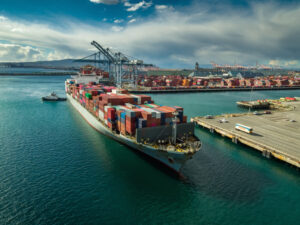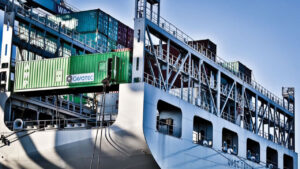A new sustainability-linked financing loan will allow the Port of Newcastle to reduce carbon emissions from incoming vessels and cargo-handling equipment at the facility.
The development of the loan was led by the National Australia Bank (NAB) and includes A$515 million ($397 million) in financing which rests on five criteria points across a range of sustainability and social targets.
Speaking to PTI, Jackie Spiteri, Senior Manager ESG at the Port of Newcastle, said the port was “encouraged” by strong lender interest in supporting the port’s sustainability goals through green-financing loans.
“We are the custodians of the port for the next 90 years or more, so our thinking must be in decades, not months or years,” Spiteri explained.
“Port of Newcastle has been very open about its sustainability ambitions – minimising our environmental footprint, diversifying trade and creating a more resilient economy requires a determined, long-term effort, with co-operation between the port and its many stakeholders.”
One of the loan metrics from NAB hinges on “demonstrated progression” under the New South Wales (NSW) Government Sustainability Advantage Recognition Scheme.
The progression under the project is reviewed by the NSW to determine if the criteria has been met – with all loan metrics independently reviewed by a third-party verifier to determine compliance.
“There are specific criteria to meet including a demonstration of sustainability commitment and continual improvement across a range of metrics,” Spiteri said.
“In a nutshell it is about setting strong foundations to make sustainability a priority for our business and building upon these to ensure we are impactful. And with all of this in place, [to] cultivate collaboration and partnerships with our stakeholders to increase the extent of that impact.”
Another metric under the loan scheme is to keep Scope 1 and 2 greenhouse gas (GHG) emissions below the port’s 2025 trajectory.
Expanding on the metric, Spiteri said the Port of Newcastle has made a commitment to a “well-below 2-degree target”, reducing Scope 1 and 2 emissions by 30%.
“This involves those emissions arising from electricity usage and in addition the port’s vessel and vehicle fleets and plant equipment.
“The trajectory accounts for future projects/developments that have the potential to influence PONs Scope 1 and 2 emissions, it is this aspect that extends the ambition of the target,” Spiteri noted.
Green financing concepts are on the rise in the maritime industry, in May 2021 COSCO Shipping Ports announced it would be launching a green finance framework by way of green bonds or loans.
For the Port of Newcastle, Spiteri said the loan and individual targets tied to it “are part of a much broader plan – they provide the backing for the next stage of what is a long journey.”
Port of Newcastle has committed to transition its entire vehicle fleet to electric vehicles by 2023. To date, the port has transitioned 75% of the fleet and is waiting on a suitable utility vehicle to come onto the market for the remainder of the fleet.
The port has also committed to have 100% renewable energy supply for its operational needs in place by the end of this year.
“As Port of Newcastle looks to future projects it will be considering low emission technology and efficiency aspects to ensure that we continue to be able to meet out Science-based Targets Initiative (SBTi) well below 2-degree commitments,” Spiteri said.









